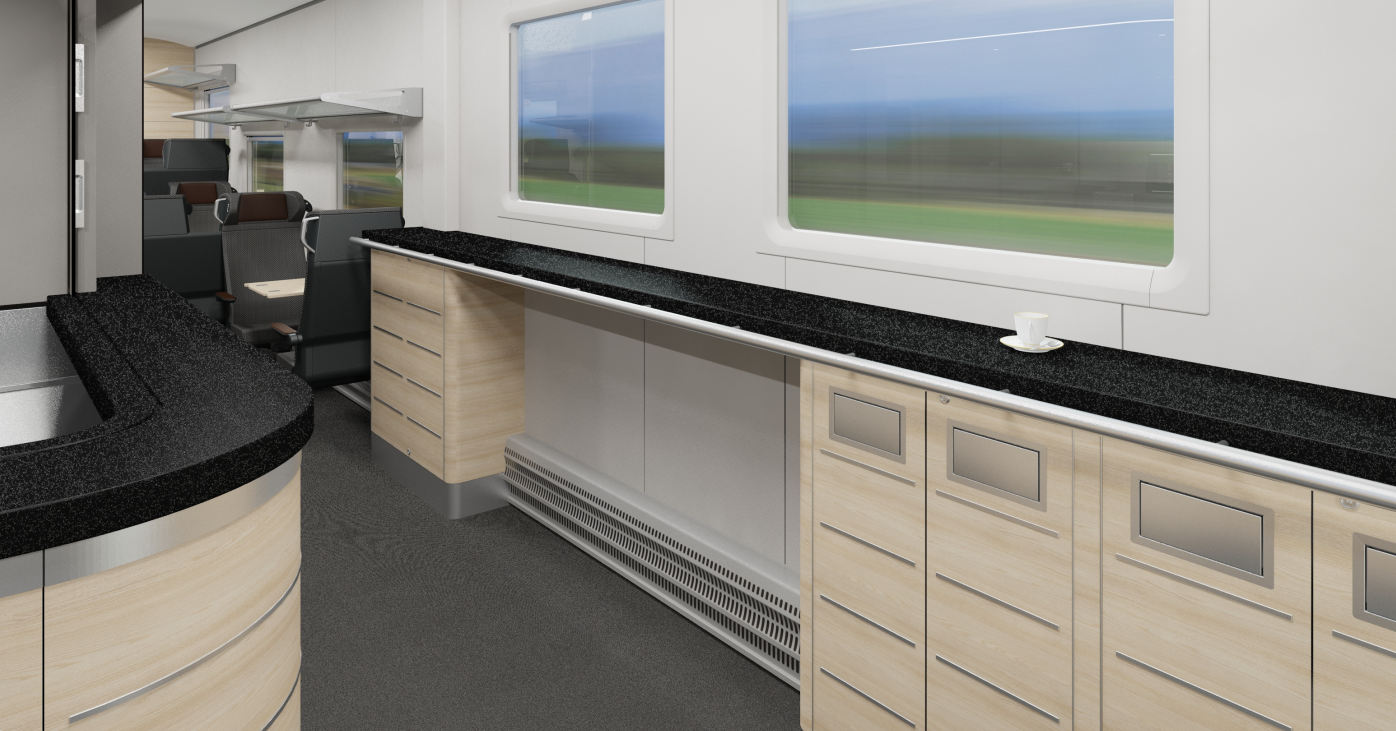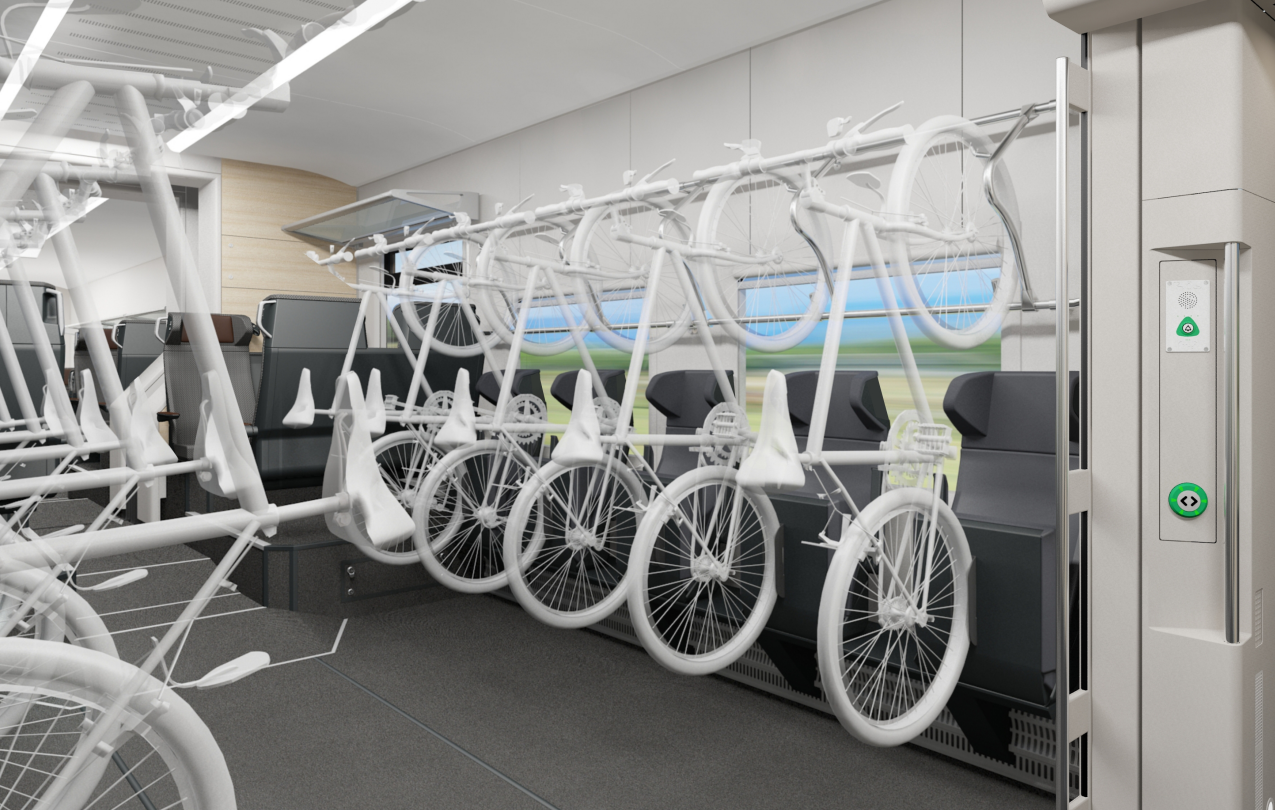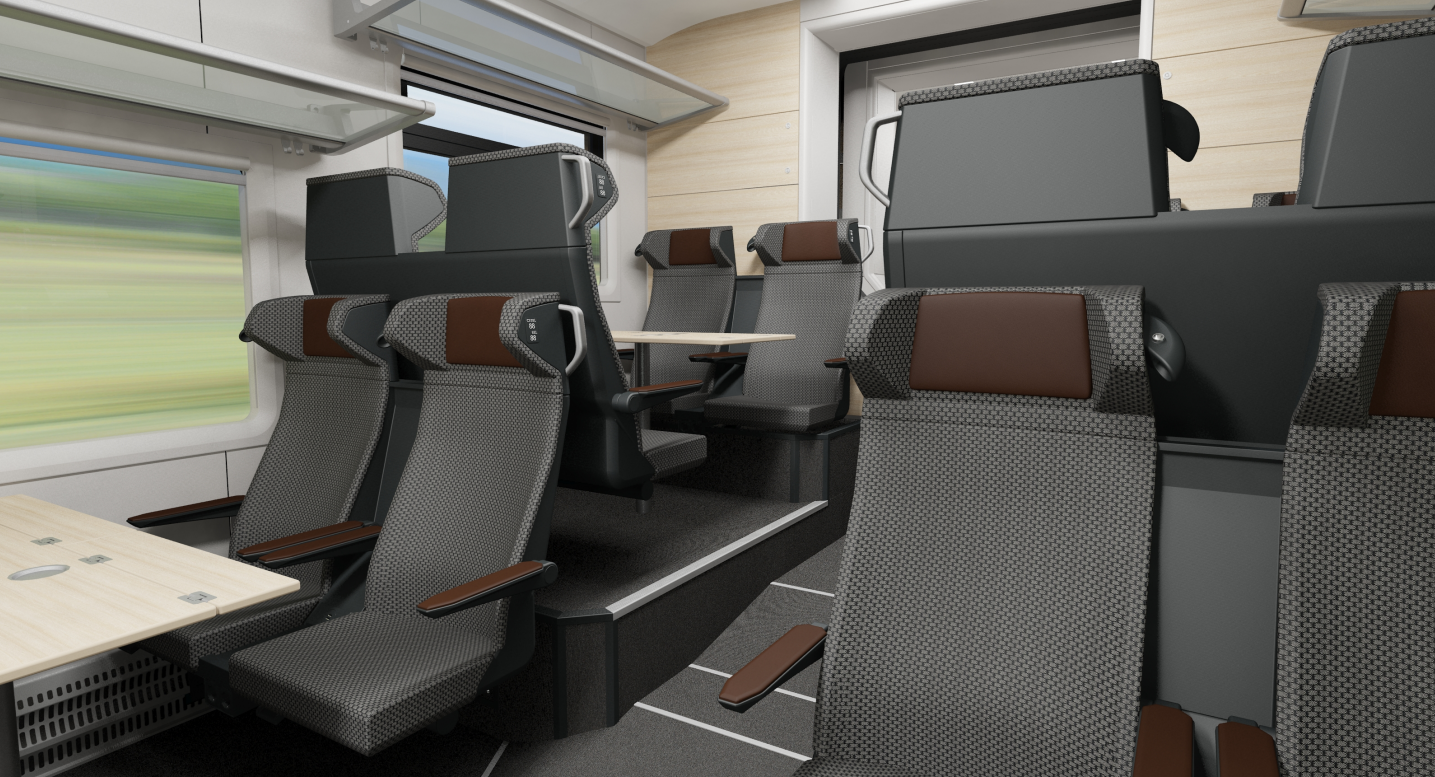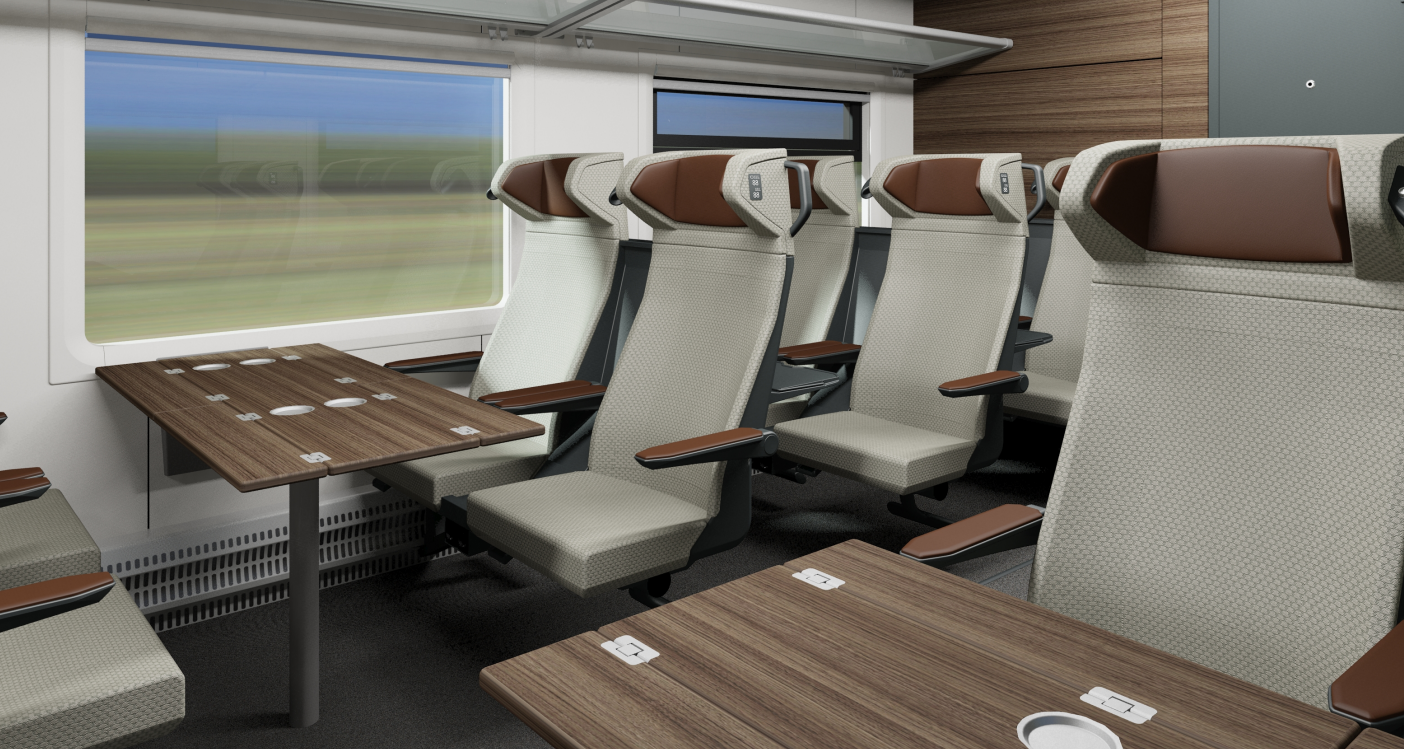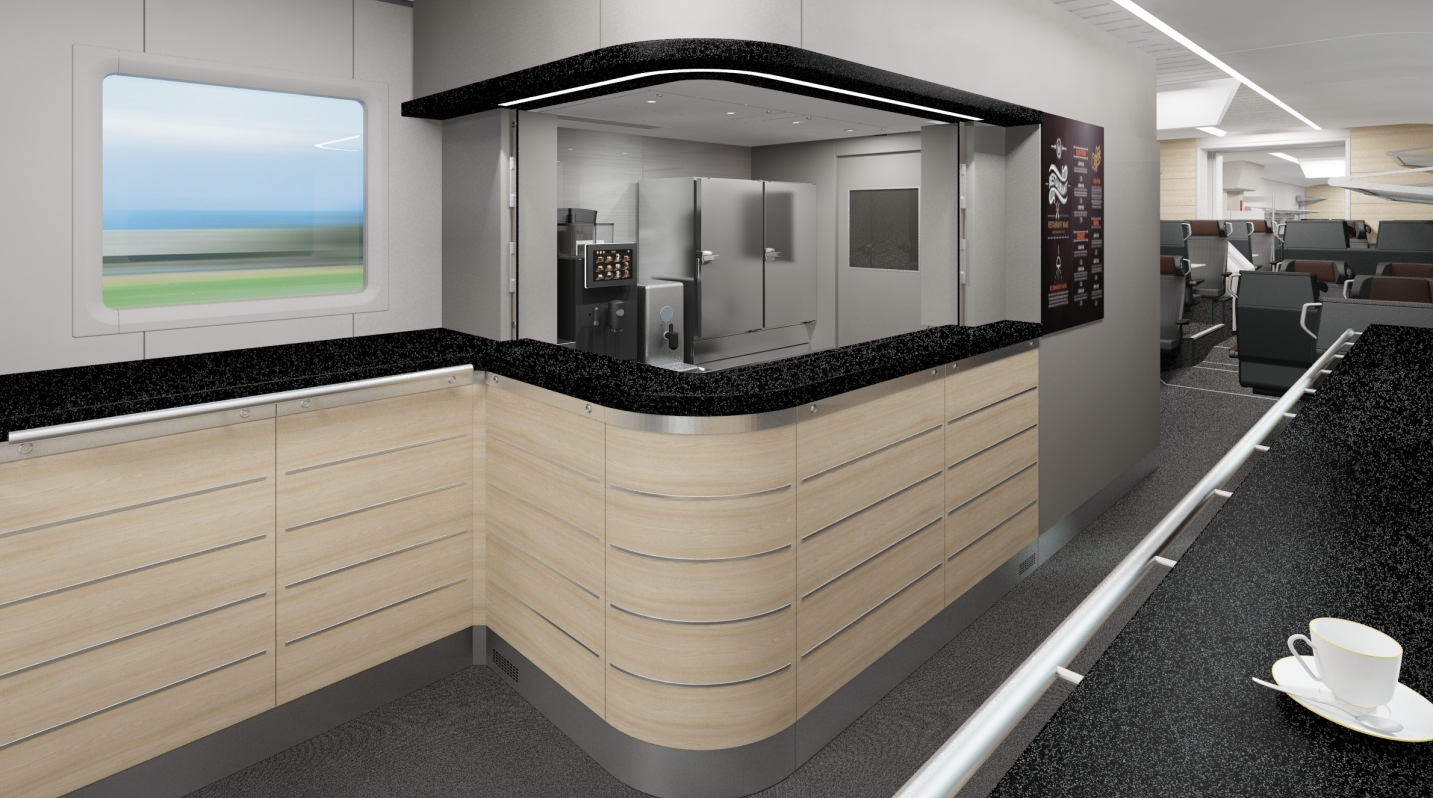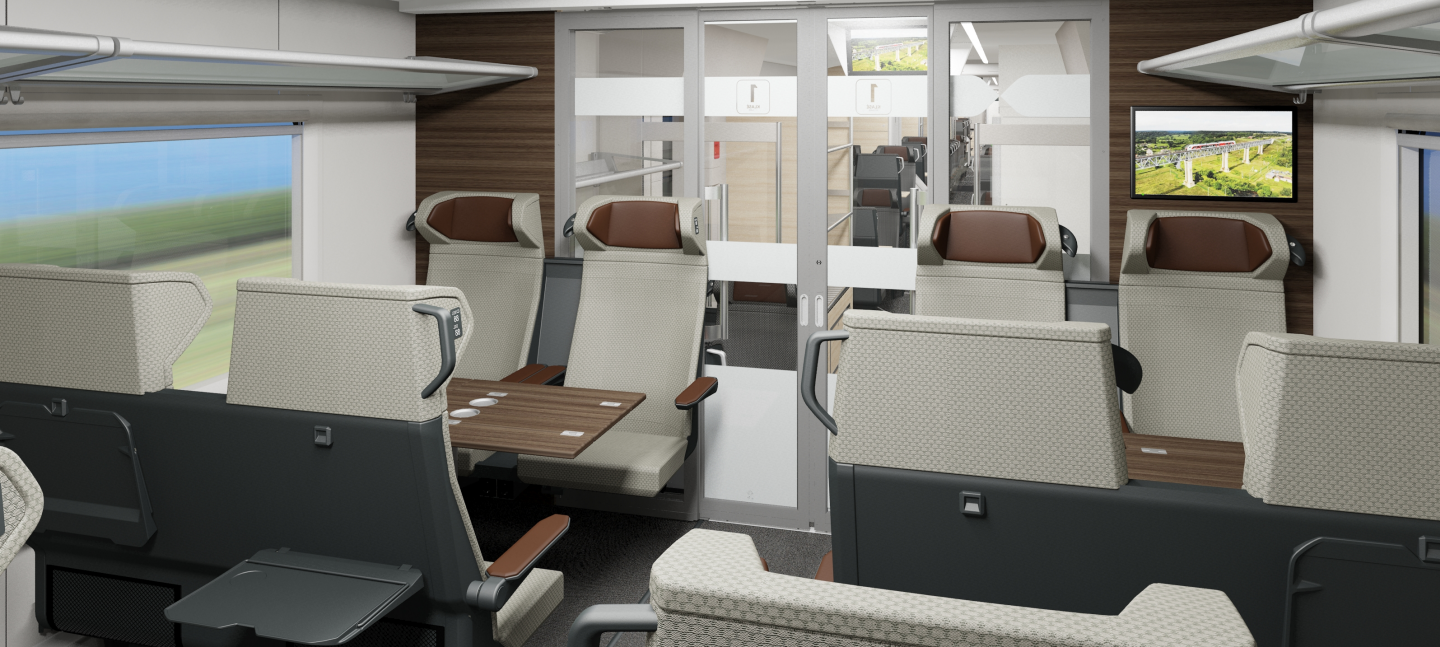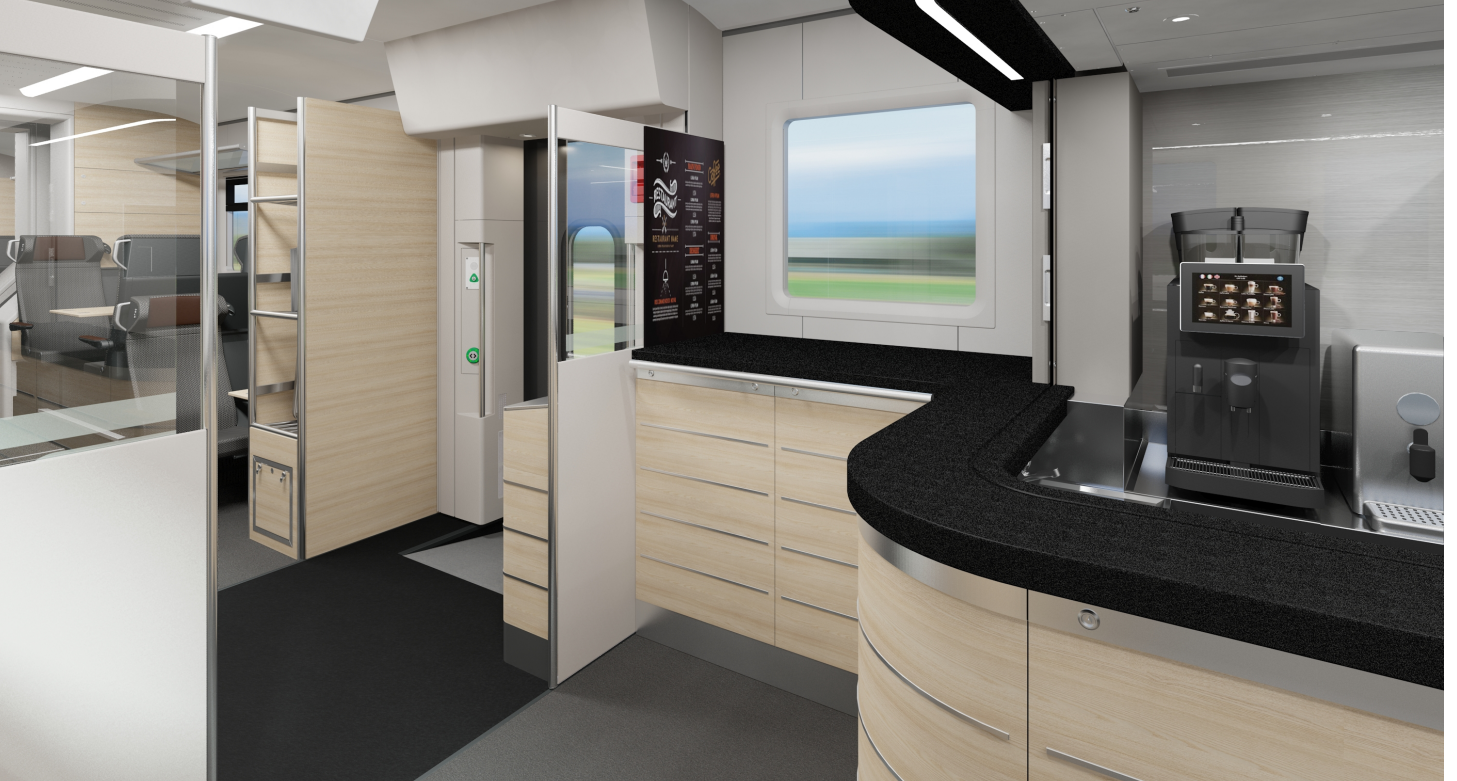LTG Link shows what the new trains will look like; they will be tested in Lithuania next year
LTG Link, the passenger transport company of LTG Group, has completed the design phase of its new trains, starting the production of nine electric and six battery-powered trains. It is already possible to see what the interior of the trains, which were specially designed for Lithuania by Swiss train manufacturer Stadler, will look like and what amenities passengers can expect. The first new trains are expected to be tested in Lithuania next year.
The new trains will be faster and much more
comfortable due to their technical parameters – the low-floor vehicles will be
easier to board for elderly people, passengers with pushchairs or small
children, and passengers with mobility impairments; in addition, passengers
will be able to move around comfortably inside the train itself.
“The new trains, which will start operating
in Lithuania in 2026, represent a major renewal for LTG Group. It is our
investment not only in making train travel in Lithuania even more sustainable,
but also in ensuring even better and more comfortable conditions for
passengers. The team and the designers have thought through many details: the
train will not only be modern, but it will also take into account the needs of
different social groups,” said Egidijus Lazauskas, CEO at LTG Group.
Electric trains on the
Vilnius-Šiauliai-Klaipėda route will be equipped with 200 comfortable seats,
that is, almost 30% more than the current trains. The new trains will have
first- and second-class interiors and a Bistro Zone where locally prepared meals,
snacks and drinks will be available. Eating will be possible both in a
dedicated area and at the travel location.
Many train travellers work during the trip,
so next to each ergonomic seat, there will be sockets, individual lighting, and
tables suitable for computers, while the seats themselves will have comfortable
adjustable backrests. Interior floors will be carpeted to reduce ambient noise
and create a cosy environment. The first class of the train will be set up as
an enclosed 16-seat space, which will be a quieter area where passengers can
call the train staff at the touch of a button.
Battery-powered trains, which will run
shorter distances, will seat 128 passengers and have coffee and snack
self-service areas.
All new trains have special seats for
travellers with children, more spacious seats for passengers with pushchairs,
and more comfortable seats for travellers with pets.
Train interiors have been designed
according to the principles of flexibility and versatility. Seats for
passengers with reduced mobility are comfortable for travelling in a wheelchair
or transferring to a train seat next to comfortable fixed tables with seating
for companions. A unique feature compared to other trains is that the seats for
people with reduced mobility are integrated into the interior, i.e. they are
not separated from other passengers. The interior layout has also been
discussed with representatives of organisations of people with reduced
mobility. People with walking difficulties will soon be able to travel more
comfortably on the trains, as between the carriages there will be no stairs,
which are common on low-floor trains.
Cyclists will also be able to travel more
comfortably: depending on demand and the season, the train will be able to hold
up to 30 bicycles, with at least 10 regular bicycle spaces in the warm season.
During the cold season, most bicycle spaces will be transformed into
comfortable seating, but there will be four bicycle spaces throughout the
year.
“This is a significant step towards a clean
and sustainable transport future – we are fulfilling the commitment of the
entire LTG Group to contribute to the development of a sustainable transport
system in Lithuania. The new trains will provide a new, more comfortable travel
culture and experience, and we hope that even more Lithuanian citizens and
visitors will appreciate sustainable travel,” says Kristina Meidė, CEO at LTG
Link.
The new trains will run on the popular
Vilnius-Klaipėda, Vilnius-Varėna-Marcinkonys and Kaunas-Šiauliai routes from
2026. The battery-powered trains will run on lines that are not scheduled for
full electrification in the near future.
The trains currently being built for LTG
Link will meet extremely high quality and comfort requirements and will be
powered by green electricity. In addition to the trains, LTG Link has also
purchased technical support services for the trains for a very long period,
until 2037. These services include the supply of spare parts, technical
support, and advice on the operation and maintenance of the new
trains.
LTG Group is the largest railway group in the Baltic States, with three main areas of activity: rail freight and passenger transport, management, maintenance and development of public railway infrastructure. LTG Group consists of the main subsidiaries: LTG Infra, LTG Cargo, LTG Link, and GTC. LTG Link aims to create a more comfortable travel experience for all its customers and to encourage people to choose more sustainable rail transport, thereby contributing to the reduction of the environmental impact of transport. The number of customers transported by the company has been growing in recent years, reaching around 5 million passengers in 2023, an increase of around 7% compared to the same period in 2022. As many as 4.7 million of these passengers travelled on domestic Lithuanian routes.
